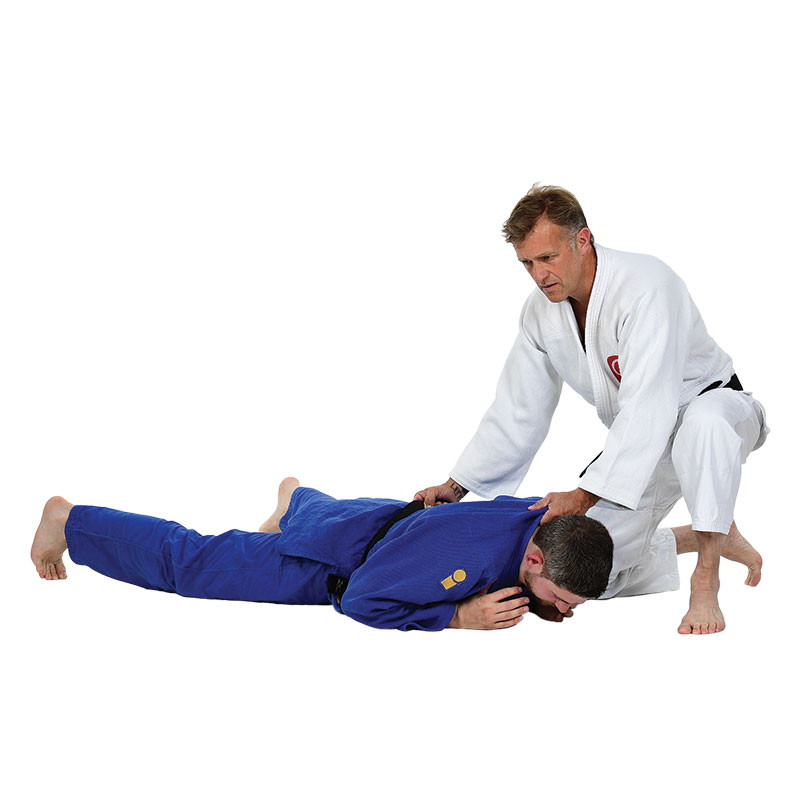Uke harabai (受腹這い) – Prone Defensive Position
Uke harabai refers to a fully prone position used by uke as a defensive posture during ne-waza (groundwork). The literal translation is “uke lying on the belly.”
In this position, uke lies flat on their stomach, with:
-
Elbows close to the torso
-
Hands placed near the neck
-
Chin tucked toward the chest
-
Toes gripping into the tatami
-
Feet slightly apart for a wide base of support
The body remains tense and compact, forming a strong defensive shell.
Purpose of the Prone Position
Uke adopts this posture in an attempt to:
-
Avoid being pinned or turned over
-
Protect the neck and limbs from submissions
-
Regain stability after a throw or scramble
By distributing weight evenly and reducing exposure of vulnerable joints, uke tries to prevent further action from tori.
Tori’s Challenge
From this position, tori must use precise control and technique to:
-
Open uke’s defensive structure
-
Turn uke over (into osaekomi-waza)
-
Transition to strangles or joint locks (shime-waza or kansetsu-waza)
Despite being a passive-looking position, uke harabai requires active defense—any lapse in posture can quickly result in tori gaining dominance.
